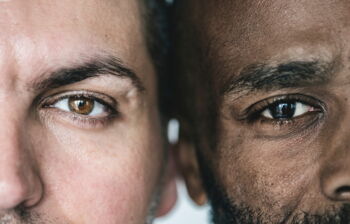Have any questions?
+44 1234 567 890
What is EoE?
EoE, or eosinophilic esophagitis, is an chronic inflammatory condition of the esophagus which is caused and maintained mainly by an allergic reaction to food. EoE is characterized by esophageal symptoms (including swallowing difficulty, food impaction, and heartburn, among others) and inflammation of the esophagus by eosinophils, a type of white blood cell.
First descibed abiut 2 decades ago, EoE represents today a very frequent cause of difficulty swallowing, food impaction, regurgitation, vomiting, and decreased appetite, mainly in joung people. However, EoE may afect patients of all ages and genders, but it is more common in males. In fact, the chronic nature of EoE and associated functioning disturbances significantly impact the quality of life of adults and children who suffer from this disorder.
EoE people usually have other associated allergic diseases, so the management of this disorder can be especially tricky.
Diagnosis
To confirm the diagnosis of eosinophilic esophagitis, an endoscopy is necessary, during which small samples of tissue (biopsies) are taken. Endoscopy is performed by introducing a thin flexible camera in the oesophagus via the mouth. This allows to inspect the oesophagus and take small biopsy samples. Analysis of these samples under the microscope will show the presence of 15 or more eosinophils per high magnification field. Various endoscopic findings reinforce the diagnosis of eosinophilic esophagitis (esophageal rings, corrugated esophagus, whitish exudates...) but it can also appear normal as well, which is why the simple appearance of the esophagus does not allow the diagnosis to be assured and biopsies are always necessary.
EoE affects only the oesophagus and does not spread to other parts of the body, so the eosinophilic inflammation is not present in the stomach and duodenum. Some diseases such Gastroesophageal Reflux Disease (GERD), may look like EoE and are sometimes difficult to distinguish from EoE.
People with EoE often have other food allergies besides in their esophagus, which do not necessarily cause the EoE. This means that a person may have a food allergy that tests positive on skin or blood tests for IgE, e.g. to nuts, but this allergy is not necessarily the one that causes EoE.
Treatment
The goal of treatment is to relieve symptoms and decrease inflammation, and thereby preventing long-term consequences such as food impactions, esophageal narrowing, and diffuse narrowing of the esophagus.
If eosinophilic esophagitis is not treated, it can lead to long-term changes in the esophagus what it called remodeling and scarring, so the esophagus loses elasticity and functionality and becomes narrower, making it difficult for food to pass through into the stomach.
To avoid all this, three types of treatments are possible: Pharmacological, dietic and dilatation.
Pharmacological (using medicines)

Medicines that inhibit acid production in the stomach are often used for EoE, this class of medicines is called proton pump inhibitors and well-known examples are omeprazole, pantoprazole and esomeprazole. These medicines are also used for the treatment of reflux symptoms and can be used safely for a long time.
Corticosteroids can also be used in this type of treatment; these are generally used to form a thin layer in the esophagus and work directly (topical use) on the inflammation in the esophagus. There are melting tablets available with budesonide (Jorveza), this is an approved product in most of the European countries and has good effects in most patients. It has a longer contact time with the mucous membrane of the esophagus and therefore achieves somewhat better results. Budesonide is sometimes prepared by the pharmacy itself so it can be administered in liquid form together with a sweetener. This way the young child can take it without difficulty, since its viscosity slowly descends through the esophagus where it exerts its effect (viscous budesonide). Alternatively, asthma puffs are sometimes prescribed for swallowing instead of inhaling. This can work very well for EoE, but the puffs are not originally intended for this use and not officially approved for this application.
EoE medicines are usually taken after breakfast and dinner, before going to bed. You should not eat or drink for 30 to 45 minutes after taking them because this will cause the drug to pass too quickly into the stomach and not have time to work in the esophagus. Grapefruit and grapefruit juice should not be taken during treatment with budesonide as it prevents the functioning of an enzyme and risks unnecessarily prolonging the activity of this drug with the consequent increase in its side effects.
Dietic

It includes three possibilities, depending on the age of the patient, his symptomatology, and other factors:
- The elemental diet, in which all foods are eliminated in their entirety and only one essential formula of nutrients is consumed. Some people call this type of food “astronaut feeding”. The elemental food can be used exclusively or in combination with other diets.
- The diet of exclusion of the foods with positive results in the allergic tests. (It is the diet with worse results obtained, at the moment this diet is not recommended. The EoE appears to follow a different immune response than that measured by food allergy tests).
- The empirical diet, which excludes those foods known to trigger the disease most often in most of the patients.
With any of the diets, there are three phases. In the first, a group of foods are eliminated for a maximum of 6 to 8 weeks, checking that the symptoms and eosinophils in the esophagus disappear.
Once the effectiveness has been proven (usually with biopsies taken with endoscopy), in the second phase the excluded foods would be introduced sequentially with clinical and endoscopic controls to identify the responsible food(s). In the third phase, it is recommended that the food(s) that trigger the EUS be excluded from the diet in a sustained manner.
The main advantage of dietary treatment is the possibility of maintaining the esophagus without inflammation in the long term, without the need for medication (swallowed corticosteroids), helping to avoid future complications. The disadvantage is that because the symptoms that cause the inflammation are not immediate and because they are not very clear and the same in all those who suffer from the disease, the process involves the need for multiple endoscopies. Sometimes up to 8 endoscopies are required in the period of a year’s time!
Dilatation

This treatment is recommended only in patients who have severe esophageal narrowing (strictures) and who do not respond to treatment with medicines or diet.
Most of these patients are adults, although there are cases of children.
This procedure, which is performed by means of gastroscopy, tries to produce a widening in the area that is narrowed. In all cases the dilation must be accompanied by medical treatment.
The Informed Patient
Frequently Asked Questions
Eosinophilic Esophagitis (EoE) is a chronic disease characterized by inflammation of the esophagus, determined by a particular type of blood cells, called eosinophils. It causes a impaired passage of food from the mouth to the stomach, with consequent difficult swallowing (dysphagia), episodes of bolus impaction and pain.
EoE is a rare and “young” condition, considering that clinicians started to describe this disease since 1993. Its frequency is significantly increasing year after year, especially in Europe and North-America, and it is estimated around 1 case per 1000 people. Nowadays it is considered the most frequent cause of dysphagia in young people, and the second cause of chronic inflammation of the esophagus after gastro-esophageal reflux disease (GERD). EoE can occur at any age, even if typical presentation age is between 30 to 40 years old. Male are three times more frequently involved than female.
.
The cause of EoE has not been completely understood yet, but it seems that genetic features, immune system malfunctioning and environmental factors play an important role. In EoE patients the immune system abnormally reacts against food and air allergens, determining inflammation of the esophagus. Most researcher think it is an allergic disorders.
The typical symptom of this disease in adults is the difficult swallowing (dysphagia), with the feeling that food is not properly progressing or remains blocked. Episodes where the food is stucked behind throat/chest are also common (food impaction), similarly to pain or discomfort during swallows. Sometimes patients use compensatory behaviors as drinking abundant water during meals, eating in small bites, chewing a lot food before swallow, avoiding solid or dry food. In some cases food cannot be swallowed, regurgitated or coughed up and endoscopic intervention is required to unblock the esophagus.
Other times this disease may present with symptoms similar to GERD, such as heartburn or retrosternal pain and regurgitation. In children, manifestations are much more heterogeneous, including refusal to thrive, vomiting and resulting in growth retardation or weight loss.
In all cases of clinical suspicious of EoE, symptoms should be carefully taken into account by a specialist and esophagogastroduodenoscopy (EGD) with multiple samples (biopsies) of the esophageal mucosa is mandatory to obtain the diagnosis. There may be abnormal features of the esophageal mucosa such as paleness, presence of whitish papules, furrows and annular narrowing of the esophagus, that are suggestive of this disease. However, these characteristics do not allow a definitive diagnosis. Biopsies are mandatory, even in patients with normal appearance esophagus, in order to identify increased eosinophilic inflammation of the esophageal mucosa. At the first evaluation with esophagogastroduodenoscopy (EGD), biopsies are often also taken from the stomach and small bowel mucosa if there is any suspicion of eosinophilic gastroenteritis.
EoE is a chronic disease that requires long-term therapy, with frequent relapse of symptoms when treatments are stopped. Drugs and diet are the most frequently proposed options. Among the drugs used, guidelines suggest proton pump inhibitors (PPIs) and topical steroids (budesonide and fluticasone) as the first therapeutic options. Although topical steroids have higher efficacy than PPIs, these latter are frequently chosen as the first line medicament because of their excellent safety profile and availability.
Another therapeutic approach is based on the elimination of culprit food allergens from the diet. The most commonly used diet regimens provides the empirical elimination of groups of food mainly involved, namely milk, eggs, wheat, soy, nuts, and fish/shellfish (6 group food elimination diet or SFED).
In recent years, so-called "biological" drugs have been the subject of many studies. They have been shown to be able to induce remission in a high percentage of patients. However, further studies are still required before they can used in regular patient care. In the near future, biologics could be useful to treat patients poorly responder to conventional therapies.
The effectiveness of all these treatments should be evaluated, after 8-12 weeks, not only considering the improvement of symptoms, but also with esophageal biopsies, aimed to assess the resolution of esophageal eosinophilic inflammation.
Unfortunately, sometimes medical treatments alone are not able to restore a complete clinical remission. Long course of untreated inflammation could determine the development of complications such as esophageal stenosis and narrowing. For these fibrotic complications, endoscopic dilation is a treatment that may be necessary to re-establish an adequate caliber of the esophageal lumen and completely resolve dysphagia.
EoE is a chronic disease and therefore, needs long lasting treatment. Unfortunately, studies dedicated to evaluate effects of therapy discontinuation have shown recurrence of symptoms and esophageal inflammation in most of patients. It seems likely that treatment should be continued for many years, perhaps life-long.
EoE is an disease caused by the immune-system so it cannot be transmitted from one person to another.
Regarding heritability, it is known that there are certain genes in which minor changes increase the chance subjects develop EoE, these genes including the minor changes. An higher risk of being affected by EoE in family members has also been found. However, we do not know whether or not, and, if yes, how often children will inherit this disease from their parents.
EoE is a chronic condition related to the immune system and cannot be prevented. We still do not know exactly how EoE develops. However, there are some indications that it runs in families and that there is a genetic predisposition. Treatment cannot start until you experience symptoms and obtain a diagnosis through your specialist.
We are setting up an interactive list of European Centers specialized in the management of EoE and other eosinophilic gastrointestinal disorders. We will update our website as soon as possible.
Take a look of “European Patient Associations” section on our website to find out more information. For any question please contact us.
Some European Countries recognize exemption from payment of healthcare taxes for EoE patients. If you are affected by this disease, ask your Gastroenterologist or send us an email if you are entitled to this possibility.
